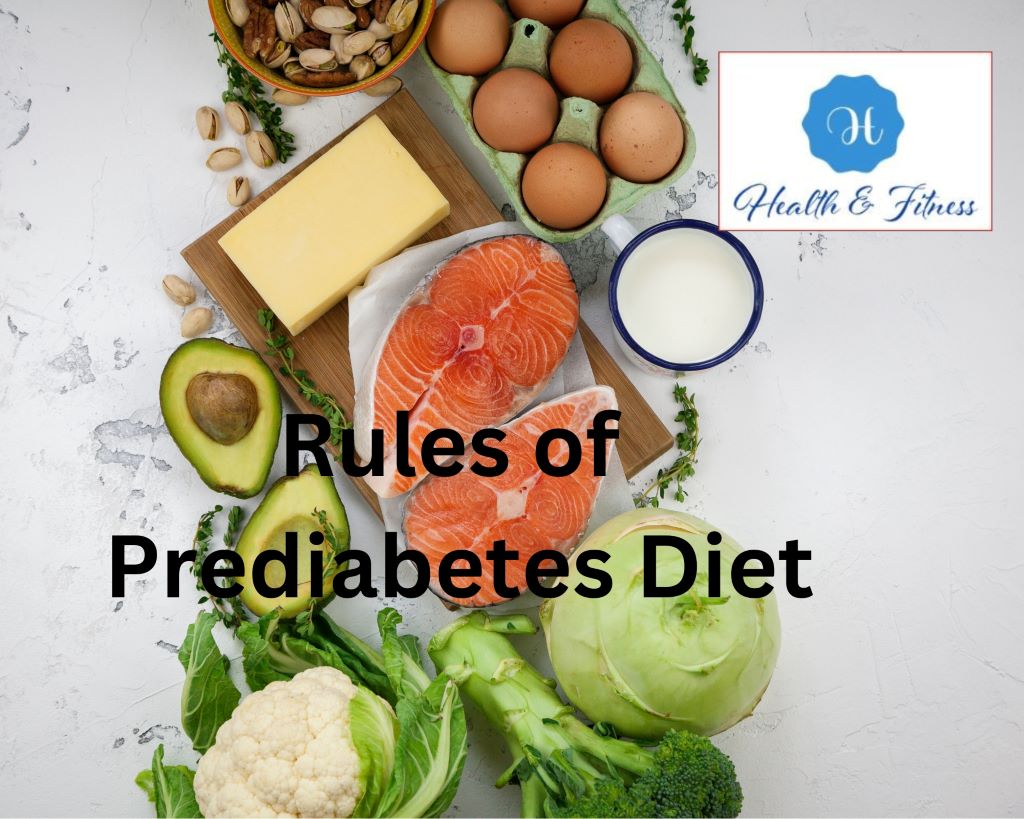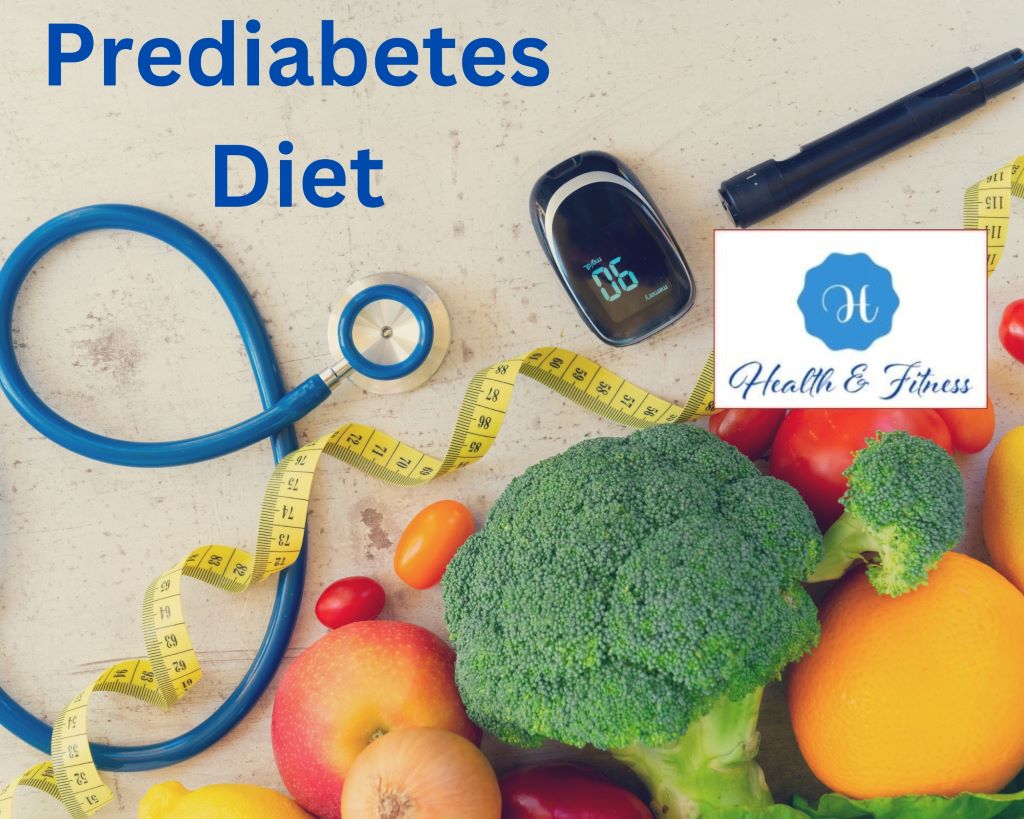Prediabetes Diet: Advantages and Adverse Effects
Explore the Prediabetes Diet: Learn its benefits and potential adverse effects. Discover how it can affect your health. Prediabetes is a condition that frequently affects persons who are overweight. It is not the same thing as diabetes, but is a strong indicator that type-2 diabetes may develop in the future. Many factors may cause diabetes. Health, nutrition, and family history affect these parameters. Genetics and a hyperactive immune system may cause diabetes. Remember that prediabetes is a diabetes. Prediabetes raises blood sugar, but not enough to be diagnosed with diabetes. Some call it a type 2 diabetes red flag. Diet may help treat prediabetes symptoms. For those at high risk of type 2 diabetes, diets that help them lose weight and restore their internal physiological systems are crucial. Prediabetes diets should include fiber-rich vegetables, fruits, and low-fat proteins. They should discourage processed meals and sugary drinks. Prediabetics should also eat low-glycemic meals.
An Overview of Diabetes Risk Factors

Prediabetes occurs when a person’s blood glucose levels are greater than normal but not high enough for type 2 diabetes.
Prediabetes usually precedes type-2 diabetes. If untreated, it may lead to type 2 diabetes, which accounts for most diabetes cases. Managing it prevents type 2 diabetes. Prediabetes is widespread in numerous Indian states, according to research. However, early detection may prevent worsening. Overweight people risk prediabetes. High insulin resistance and a family history of type 2 diabetes increase risk. Family history increases type 2 diabetes risk. Prediabetes causes thirst, urination, and slow wound healing. You have prediabetes if the following assertions are true: your fasting blood glucose is 100–125 mg/dl, and your hemoglobin A1c is 5.7%–6.4%. An Oral Glucose Tolerance test yielded 140–199 mg/dl two hours after eating.
Rules of Prediabetes Diet

The presence of prediabetes is very reliant on both your general health and the foods you eat. Consequently, developing food and exercise routines can help you eliminate it. Suppose a person who is obese and has prediabetes reduces even a modest amount of weight. Because of this, in that case, the symptoms of the condition become less severe, and there is no longer any risk of developing type 2 diabetes. Losing even a modest weight can be equivalent to losing between 5 and 7 % of your body weight. Eating plans for prediabetes assist in managing weight using a balanced diet, ultimately leading to the elimination of prediabetes.
Some guidelines for a Prediabetes Diet are as follows:
Select Foods with a Low Glycemic Index.
There are two distinct varieties of carbohydrates, fast-digesting and slow-digesting. However, consuming carbohydrates that are digested more slowly is considered more beneficial to one’s health. A high glycemic index is characteristic of carbohydrates that are digested quickly. As a result, they cause an increase in the amount of sugar in the blood within the body. These carbohydrates are sugar or foods that include sugar.
Patients who have prediabetes should avoid certain types of carbohydrates. Low on the glycemic index, slow-digesting carbohydrates release their energy steadily and gradually. For this reason, it is essential to pick foods with a low glycemic index to prevent significant rises in blood sugar. The following are examples of foods with a low glycemic index that are appropriate for a diet for prediabetes: non-starchy veggies (like carrots); sweet potatoes; leafy greens; squash; corn; and whole wheat pasta.
Raise Your Intake of Dietary Fiber
For someone with prediabetes, upping their fiber intake may be a step in the right direction. According to several studies, One’s risk of acquiring type 2 diabetes can be reduced by consistently eating a diet that contains a suitable amount of fiber. When there is a high concentration of dietary fiber, particularly soluble fiber, there is an improvement in glycemic management and a reduction in the number of plasma lipids. Additionally, fiber helps control bowel motions and can increase the volume of food consumed overall. It makes you feel filled for longer and stops you from overeating, so you’ll take in fewer calories and have a better chance of beating obesity. Foods such as lentils and beans, avocados, peas, broccoli, blueberries, barley, and oatmeal are foods that are high in fiber and can be consumed by an individual.
Avoid Sugary Drinks and Beverages
Sugars are the principal foes of a patient who is diagnosed with prediabetes. Sugars have a high glycemic index, so they quickly elevate your blood sugar levels and temporarily boost your energy. These are not beneficial for a prediabetes patient or the typical person unless you are a runner and taking it as a pre-workout drink. Except for that, you should stay away from them. If a person with prediabetes consumes sugar or drinks high in sugar content, they put themselves in a more precarious position, raising the likelihood of developing type 2 diabetes. Therefore, if you want to minimize your chance of acquiring prediabetes and type 2 diabetes, you should avoid specific kinds of liquids and beverages.
Make Sure You Get Enough Water
The recommended daily intake of water for a man is 100 ounces, while the maximum amount recommended for women is 72 ounces. Sadly, most people do not consume enough water to satisfy this minimum requirement.
Hydration, regulation of core temperature, and proper metabolic function require enough water intake. Nevertheless, keeping a record of every millimetre you take is unnecessary. Instead, you should continue to check your pee. It ought to have a yellowish hue to it. If it is a darker yellow, this indicates that your body is dehydrated. As a result, you should aim to consume between three and four litres of water daily.
Eat Plenty of Lean Proteins.
The levels of glucose in the blood are only slightly affected by protein. Because of this, dietitians strongly recommend consuming a serving of protein with each meal because it helps balance the amount of sugar absorbed into the blood. Include more lean proteins in your diet than those higher in saturated fats if you are preventing prediabetes. When adding protein to fish, be sure that you do not cook the fish in butter,
Deep fry it, or use a marinade or glaze full of sugar. Eggs, chicken, fatty fish (like salmon), Greek yogurt, and nuts are high in protein but low in calories. Functional Foods The term “functional” refers to foods that can help regulate blood sugar levels and are included in a diet for prediabetes. They are foods that occur naturally and, besides their essential nutritional value, also have additional medical benefits.
In the Prediabetes Diet, some functional foods to include are:
Ingredients include extra-virgin olive oil, flaxseeds, apple cider vinegar, garlic, cinnamon, chia seeds, and turmeric. Extra-virgin olive oil is also recommended.
Advantages of Adopting a PreDiabetes Diet
A diet for prediabetes does not include any specific supplements or additions that could damage the body. This diet is suitable for both diabetics and those at risk. Prediabetes diets control blood sugar and prevent type 2 diabetes. It contains low-GI carbs. Prediabetic symptoms emerge from insulin resistance. Insulin resistance occurs when the body fails to react to blood sugar increases by secreting enough insulin. Prediabetes diets eliminate these disorders and enhance insulin sensitivity. Prediabetes diets contain diabetes-friendly foods and are tailored to help you lose weight. Obesity raises the risk of diabetes, especially prediabetes. Thus, this diet can reverse obesity in overweight persons.
Dietary Risks Associated with Prediabetes

A diet for people at risk of developing diabetes is safe and free of potential adverse effects. It consists of a completely natural dietary mix that is good for the well-being of all individuals. When you are on a diet for prediabetes, though, you may experience cravings for sweet beverages or sugary foods. It also causes you to feel the want to add artificial sweeteners to your diet, although your diet is otherwise healthy. The diet for prediabetes is structured on two primary criteria. One method counts the number of carbohydrates, and another creates recipes with similar nutritional profiles. Everyone following a diet for prediabetes is required to keep a food diary. The total amount of carbohydrates in that portion keeps that dish to its lowest possible rating. It consumes the majority of your available time. It might be exhausting to track what you eat and how much you drink.
Methods for Taking Control of Prediabetes
Exercise
Managing prediabetes involves maintaining a consistent fitness schedule. The primary goal of physical activity should be to burn excess stored calories.. Aside from this, young adults at a higher risk for developing diabetes might consider taking up running because it improves cardiovascular health and automatically lowers blood cholesterol and diabetes effects. To obtain a healthy fitness regimen tailored to your current state of health by consulting your physician. Aiming for a daily aerobic exercise regimen at least thirty minutes long helps reduce the diabetes effect.
Regular Check-Up
Keep an eye on the reports regarding your health. Check-in with your physician regularly to discuss your blood sugar levels and other cholesterol and insulin sensitivity indicators. You will diagnose your conditions with the assistance of this tool, and it will serve as evidence of your success in warding off prediabetes.
Keep yourself hydrated.
Everyone needs to make sure they stay hydrated. Prediabetics must drink plenty of water to manage stress and prevent fluid loss. Dehydration or fluid loss can lead to unstable insulin levels in a person.. Dehydration also causes an increase in cortisol, the stress hormone, which may affect your blood sugar levels.
A Restful Night’s Sleep
Those who get less than six hours of sleep per night are more likely to develop diabetes. Getting at least eight hours of sleep every night is critical because proper sleep helps you heal, rejuvenate, and replenish your body’s energy so it is ready for the next day. Suppose you experience transient discomforts such as headaches or stomach pain. In that case, you should discuss combining the drugs that treat your prediabetes with those that treat headaches and stomach pain. Interactions between different medications can occasionally have serious adverse effects.
warp-up
Prediabetes is a condition that frequently affects persons who are overweight. Prediabetes is not the same thing as diabetes but is a powerful indicator that type-2 diabetes may develop in the future. Consistently performing blood tests is the most reliable method for detecting prediabetes. Sadly, many patients do not exhibit symptoms until the problem develops into type 2 diabetes. This is a common occurrence. However, adhering to a diet for prediabetes can assist you in better managing the issues associated with prediabetes.
A prediabetes diet involves eating relatively low-carbohydrate items that take longer to digest. As part of your diet for prediabetes, you should avoid using butter or excessive oil when you cook. Besides the importance of one’s nutrition, it is also essential to strongly emphasize maintaining a healthy exercise regimen and consulting a physician regularly. It helps to assess whether a prediabetes diet is working for you.



